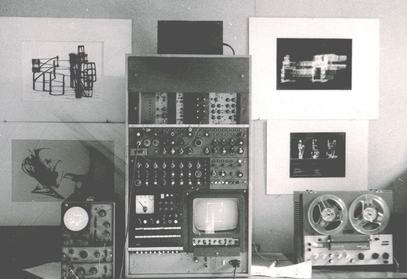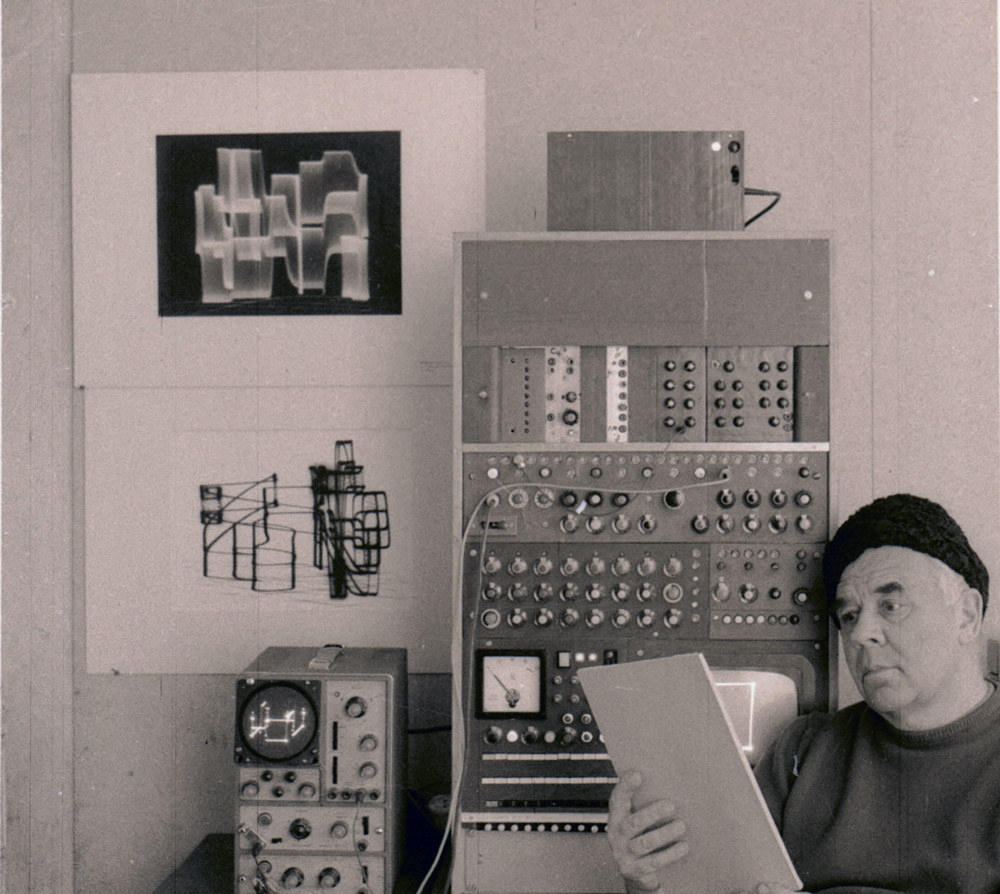The Studio Computer
The computer as a tool for creative people
Especially for Otto Beckmann’s artistic ideas, his son Oskar Beckmann built a computer that could generate images and associated sound sequences. The first version a.i./70, a digital-analog hybrid computer, went into operation in June 1970 and was continuously expanded. The first photo was taken in Otto Beckmann’s studio in 1973 and shows the a.i.Pl./73 version.
How it worked
The studio computer consisted of several parallel digital state processors that controlled an analog arithmetic unit, where the assignment to image elements and their further processing took place. This was used to generate virtual 3D objects, which were then visible on the screen in perspective view.
The individual functions were predetermined, but could be linked as required using keypads and parameterized using a rotary control. The artist was able to design the process interactively immediately and in real time without having to change the program. Such interaction in real time was not possible with the mainframe computers of the time.
The studio computer at exhibitions
The studio computer was first shown to the public in 1990 in the exhibition “From Zuse to Beckmann and ars electronica“, EVN St. Pölten. It was then on loan to the Lower Austrian Provincial Museum until 2005. It was shown in 2005 at the Kepler University Linz, in 2007 at the Neue Galerie im Joanneum Graz, from Jan. 2008 to Jan. 2009 at the “BIT-international” at the ZKM Karlsruhe and from June 10 to August 28, and last shown 2011 at the Lower Austrian Documentation Center in St. Pölten.
The studio computer has been in the possession of the ZKM Karlsruhe since 2023, after Oskar Beckmann bequeathed it to the ZKM in his will.

